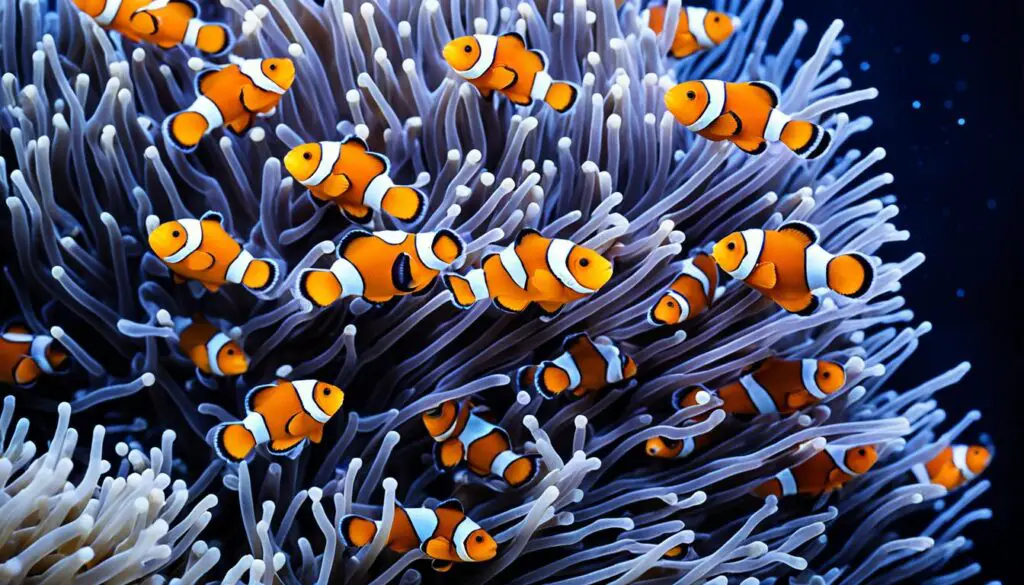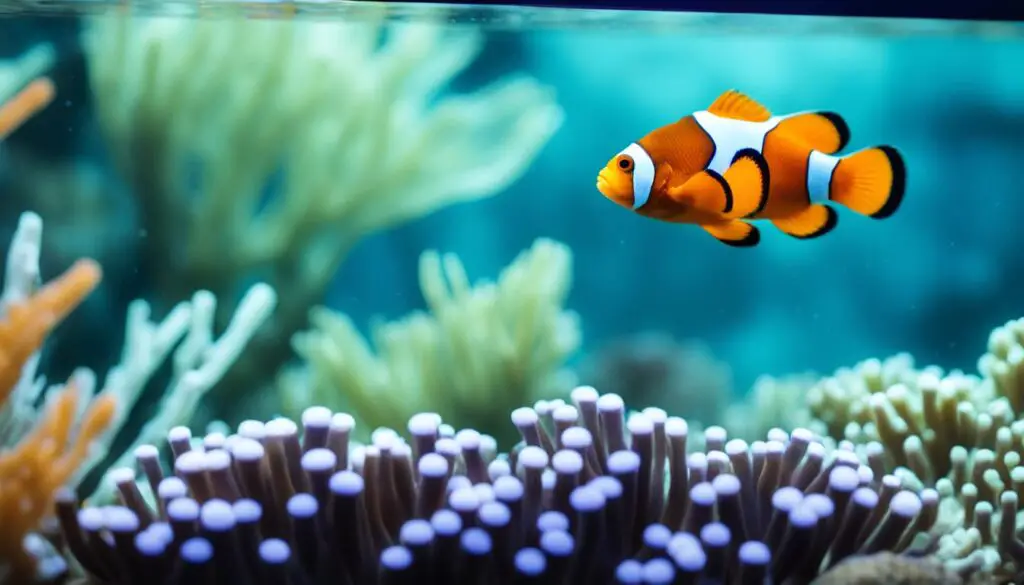When Do Dolphins Come Out
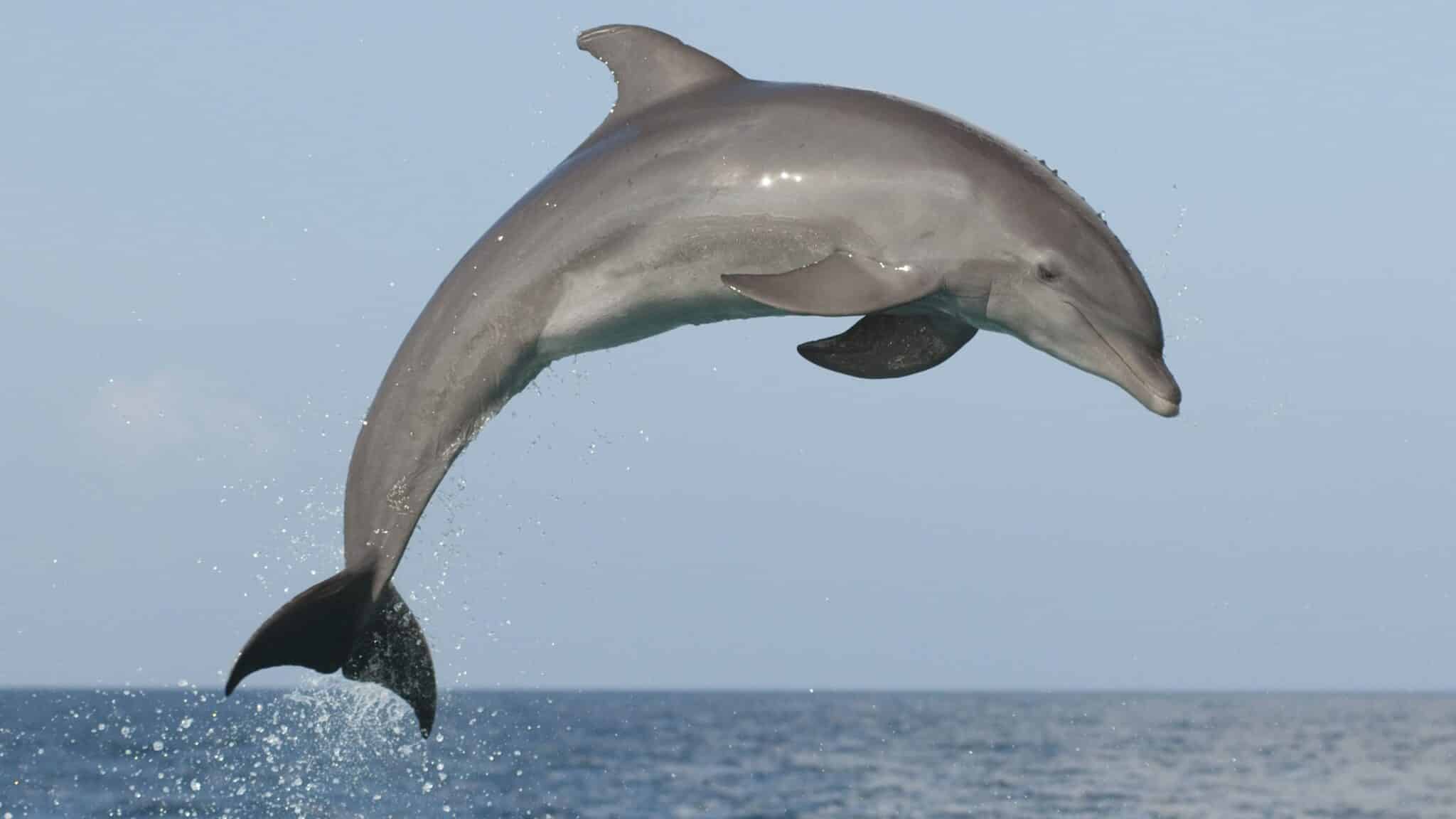
Introduction
Dolphins, with their remarkable intelligence and playful nature, have long captured the fascination of humans worldwide. While these marine mammals spend most of their lives beneath the ocean’s surface, there are occasions when they emerge into the open air. In this exploration, we will delve into the intriguing world of dolphins and uncover the various circumstances and reasons behind their appearances above water. From their majestic leaps in the wild to their endearing interactions with humans in captivity, the moments when dolphins come out offer a glimpse into their captivating lives.
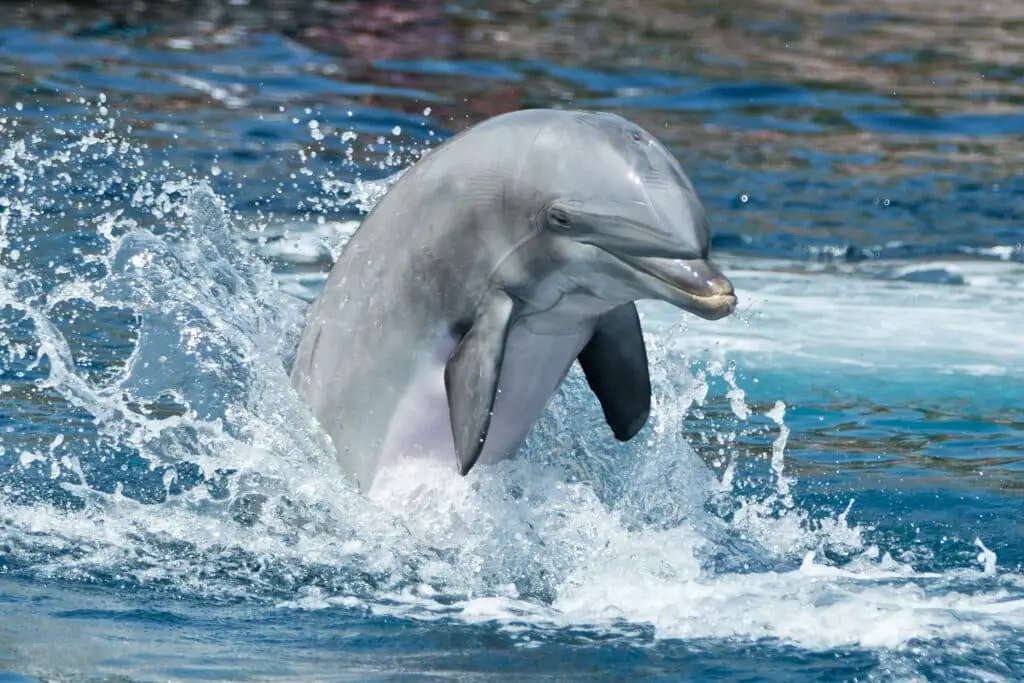
What are the primary reasons why dolphins come out of the water?
Dolphins and whales have lungs like humans. Lungs cannot take in oxygen dissolved in water. So they come up to the surface of water to breathe in air through their blowholes. These blowholes are nothing but nostrils at the back of their head.
Dolphins, those charismatic marine mammals, occasionally grace us with their presence above the water’s surface for various reasons. While their lives are primarily aquatic, they do come out of the water for specific purposes. Here are some of the primary reasons why dolphins come out of the water:
Breathing: Like all air-breathing mammals, dolphins need to come to the surface to breathe. Dolphins are conscious breathers, meaning they have to actively come up for air, and they do this frequently. On average, they surface to breathe every two to three minutes, but this can vary depending on the species.
Thermoregulation: Dolphins are warm-blooded animals in a cold-blooded ocean. When they bask in the sun near the water’s surface, they absorb heat. Conversely, they might dive deeper to cool off if the water becomes too warm. This behavior helps them regulate their body temperature.
Social Interaction: Dolphins are highly social animals, often found in groups called pods. They use surface activities like leaping, breaching, and tail-slapping as a form of communication and bonding within their pod. These behaviors strengthen social bonds and convey information to other pod members.
Feeding: While dolphins primarily hunt underwater, they may leap out of the water in pursuit of prey. This behavior, known as porpoising, is an efficient way to catch fast-moving fish.
Play and Entertainment: Dolphins are renowned for their playful nature, and they sometimes come out of the water seemingly just for fun. They enjoy riding the bow waves of boats and performing acrobatic displays that can be a source of entertainment for both them and human observers.
Escaping Predators: Dolphins, especially calves, may breach or leap out of the water when pursued by predators like sharks. This sudden burst of speed and agility can help them escape potential threats.
Migration: Certain species of dolphins, such as the spinner dolphin, are known for their spectacular aerial displays during migration. They leap and spin in the air, possibly to communicate with other members of their migrating group.
How do environmental factors, such as weather and water temperature, influence the timing of a dolphin’s emergence?
Changes in sea temperature, freshening of seawater, acidification, rises in sea levels, the loss of icy polar habitats and the decline of food sources are just some of the many dangers which climate change poses for whales and dolphins.
Environmental factors, including weather conditions and water temperature, play a significant role in influencing the timing of a dolphin’s emergence from the water. Dolphins are highly attuned to their surroundings, and these factors can impact their behaviors in several ways:
Temperature Regulation: Water temperature is a crucial factor for dolphins. Dolphins are warm-blooded, but the ocean’s temperature can vary greatly. They may come out of the water during colder seasons or times of the day when the surface water is warmer to regulate their body temperature. Basking in the sun at the water’s surface helps them warm up, while diving to deeper, cooler waters allows them to cool down.
Weather Conditions: Dolphins are sensitive to changes in weather. In rough seas or during storms, they may avoid coming out of the water due to the increased risk of injury. Calm and mild weather conditions are more conducive to surface activities like breaching and riding waves. High winds and choppy waters can make it challenging for dolphins to stay above the surface for extended periods.
Predator Avoidance: Weather conditions can affect predator behavior. Dolphins may come out of the water or change their surfacing patterns when they perceive a threat from predators like sharks. A calm surface might encourage them to stay above water longer, while turbulent waters may prompt them to stay submerged for safety.
Feeding Opportunities: Environmental factors such as wind and water temperature can influence the distribution of prey species. Dolphins are opportunistic feeders, and they may come out of the water when prey concentrations are near the surface due to factors like upwelling or water temperature gradients.
Breeding and Migration: Some dolphin species migrate seasonally in response to environmental cues. Environmental factors like water temperature changes can trigger migration, leading to increased surface activities as they travel to different areas.
Social Interactions: Weather and water conditions can affect the social dynamics within a dolphin pod. Calm seas may promote play and social bonding activities that involve surface behaviors, while rough conditions may lead to more subdued interactions.
Are there specific times of day or seasons when dolphins are more likely to be seen above the water’s surface?
They tend to be less active at night, especially if it’s cloudy or rainy out. Dolphins prefer to hunt and play when the tide is low (when there’s less water). They’ll be less active if there’s more water around them.
The visibility of dolphins above the water’s surface is influenced by a variety of factors, including their behavior, location, and environmental conditions. While there are no rigid rules, there are certain patterns that suggest specific times of day or seasons when dolphins are more likely to be seen above the water’s surface:
1. Diurnal vs. Nocturnal Behavior: Dolphins are primarily diurnal, which means they are most active during the day. Therefore, daylight hours are generally the best times to observe them above the water’s surface. They tend to rest and conserve energy during the night, although some species may exhibit nocturnal behaviors.
2. Tides and Feeding: The timing of tides can significantly influence when dolphins are seen above water. In areas where tides affect the distribution of prey, dolphins may be more active during incoming or outgoing tides when hunting is more productive.
3. Seasonal Migration: Many dolphin species undertake seasonal migrations. For instance, some species migrate to warmer waters during the winter months for breeding and calving, making them more visible during those seasons. Conversely, they may move to cooler waters during the summer.
4. Breeding and Calving: Breeding and calving seasons can also impact the visibility of dolphins. Female dolphins often come to shallower waters or closer to the surface when giving birth, making them more likely to be seen during these times.
5. Playful Behavior: Dolphins are known for their playful nature, and they may engage in playful activities such as leaping, riding waves, and performing aerial displays during certain times of the day. This behavior is often observed in the morning when they are more active.
6. Environmental Factors: Environmental conditions like water temperature, weather, and food availability can influence when dolphins come to the surface. For instance, on calm days with abundant prey, dolphins may be more active and visible.
7. Human Activity: In areas with high levels of human activity, such as near popular tourist destinations, dolphins may adjust their surface behaviors to interact with boats and tourists, making them more visible during certain times of the day.
What are some of the behaviors and activities that dolphins engage in when they come out of the water?
Both young and old dolphins chase one another, carry objects around, toss seaweed to each other, and use objects to solicit interaction. Such activity may be practice for catching food. At SeaWorld, dolphins have been observed using objects like fish in seemingly playful ways.
When dolphins come out of the water, they engage in a range of captivating behaviors and activities that have intrigued and delighted observers for generations. These behaviors offer insight into the social, playful, and adaptive nature of these remarkable marine mammals. Here are some of the behaviors and activities that dolphins exhibit when they emerge above the water’s surface:
1. Breaching: One of the most spectacular behaviors is breaching, where dolphins launch themselves out of the water, often twisting and spinning in mid-air before splashing back down. This behavior is believed to serve various purposes, including communication, dislodging parasites, and possibly as a form of play.
2. Tail Slapping: Dolphins may slap their tails on the water’s surface, creating loud splashes. This behavior can have multiple functions, such as communication within a pod, stunning prey, or warding off potential threats.
3. Riding Waves: Dolphins are known for riding the bow waves created by boats. This behavior, known as bow-riding, allows them to conserve energy while surfing the pressure wave created by the vessel’s movement. It is also a common way for dolphins to interact with boats and humans.
4. Aerial Displays: Dolphins are skilled acrobats and may perform various aerial displays, including flips, spins, and somersaults. These displays are thought to be a form of play and social interaction within their pod.
5. Social Bonding: Dolphins are highly social animals, and surface behaviors often play a role in strengthening social bonds within their pod. Activities like nuzzling, body rubbing, and synchronized swimming are common when dolphins come out of the water.
6. Feeding: While dolphins primarily hunt underwater, they may use surface behaviors to corral and trap prey. For instance, they may encircle schools of fish and drive them to the surface before lunging to capture their prey.
7. Communication: Dolphins use a variety of sounds and body movements to communicate with each other. Surface behaviors, such as breaching and tail slapping, may be a means of conveying information within the pod or signaling their presence to other dolphins.
8. Play: Play is an essential aspect of a dolphin’s life, and many surface behaviors are thought to be playful activities. These antics can include games of catch, tag, or simply frolicking in the waves.
How do dolphins in the wild differ in their surfacing behavior compared to those in captivity?
In the wild, dolphins swim dozens of miles a day in an ocean full of other animals, plants and endless variety. In captivity, they’re confined to tanks 200,000 times smaller than their natural range. In the wild they live in large, natural groups with their families.
Dolphins in the wild exhibit surfacing behaviors that differ significantly from those in captivity. These distinctions are primarily driven by their environment, natural instincts, and the unique challenges they face in each setting. Here’s a closer look at how dolphins in the wild differ in their surfacing behavior compared to those in captivity:
1. Natural Habitat vs. Enclosure: Dolphins in the wild have the vastness of the open ocean as their natural habitat. This means they have more space to roam and explore, and their surfacing behaviors are often linked to their needs in the wild, such as hunting, breeding, and socializing. In contrast, dolphins in captivity are confined to relatively small enclosures, limiting their ability to engage in natural behaviors.
2. Hunting and Foraging: In the wild, dolphins spend a significant portion of their time hunting for prey. They use various surfacing behaviors, such as breaching and tail slapping, to herd and trap schools of fish. These behaviors are essential for their survival and are rarely replicated in captivity, where they are typically fed a controlled diet.
3. Social Dynamics: Wild dolphins live in dynamic social groups known as pods. Their surfacing behaviors often involve interactions with other pod members, including playful activities like leaping, synchronized swimming, and social bonding. In captivity, dolphins may have limited interaction with other dolphins, which can impact their social behaviors.
4. Migration and Exploration: Some dolphin species undertake long migrations in the wild, traveling vast distances and engaging in surface behaviors associated with their migratory patterns. Captive dolphins lack the opportunity for such migrations and may exhibit restlessness or boredom as a result.
5. Natural Reproduction: Breeding and calving are natural processes in wild dolphin populations. Dolphins in the wild may come out of the water during breeding and calving seasons. In captivity, breeding is often controlled by human handlers, and the behaviors associated with natural reproduction may be limited or absent.
6. Response to Environmental Factors: Wild dolphins respond to environmental factors such as weather, tides, and prey availability by adjusting their surfacing behaviors. Captive dolphins are shielded from many of these environmental pressures and may exhibit different surfacing behaviors as a result.
Are there specific locations or regions around the world known for frequent dolphin sightings above the water?
Yes, there are indeed specific locations and regions around the world that are renowned for frequent dolphin sightings above the water. These areas are often characterized by favorable environmental conditions, abundant prey, and sometimes, unique geographical features that attract dolphins. Some well-known locations include:
The Bahamas: The crystal-clear waters of the Bahamas are home to numerous dolphin species, including the playful Atlantic spotted dolphin. Tourists flock to this area for dolphin-watching excursions.
Hawaii: Hawaiian waters are frequented by spinner dolphins known for their acrobatic displays. Visitors often have opportunities to witness these dolphins spinning and leaping.
New Zealand: New Zealand’s coastal waters are rich in marine life, and bottlenose dolphins are commonly spotted here. The Bay of Islands is a particularly popular destination for dolphin encounters.
Costa Rica: The Pacific coast of Costa Rica, especially areas like Drake Bay and Golfo Dulce, offers excellent opportunities to observe various dolphin species, including spinner and bottlenose dolphins.
Mediterranean Sea: Various dolphin species are found in the Mediterranean, particularly in regions around Greece, Italy, and Spain, where boat tours provide opportunities for dolphin sightings.
Monterey Bay, California: Known for its marine biodiversity, Monterey Bay is home to several dolphin species, and whale-watching tours often result in dolphin encounters.
What role does social interaction play in dolphins’ decision to come out of the water?
Social interaction plays a crucial role in a dolphin’s decision to come out of the water. Dolphins are highly social creatures that thrive on interactions with other members of their pod. When they come out of the water, they often engage in surface behaviors as a means of communication, bonding, and socializing. These behaviors can include playful antics like leaping, synchronized swimming, and nuzzling. Social interactions serve to strengthen the cohesion of the pod, convey information about the environment or potential threats, and facilitate cooperation in activities such as hunting and raising offspring. Dolphins’ desire for social interaction can motivate them to surface and engage in behaviors that promote group dynamics and maintain social bonds.
How do dolphins’ surface behaviors vary between different dolphin species?
Dolphin species exhibit a wide range of surface behaviors, and these behaviors can vary significantly between species. Some examples of variations include:
Spinner Dolphins: Spinner dolphins are known for their spectacular spinning leaps out of the water, often rotating several times. This behavior is unique to spinner dolphins and is thought to be a form of play and communication.
Bottlenose Dolphins: Bottlenose dolphins are highly intelligent and engage in various surface behaviors, including bow-riding, breaching, tail-slapping, and synchronized swimming. Their behaviors can vary based on their environment and social context.
Orca (Killer Whales): Orcas are a type of dolphin known for their impressive breaches and spectacular displays of power. They also engage in coordinated hunting strategies, which involve surface behaviors such as tail-slapping to stun prey.
Commerson’s Dolphins: These small dolphins are known for their agility and may engage in rapid, side-to-side jumps and flips near the surface.
The diversity of surface behaviors reflects the unique adaptations and behaviors of different dolphin species, shaped by their habitat, prey, and social structures.
How have human activities, such as boat traffic and tourism, impacted the natural patterns of when dolphins come out of the water?
Human activities, including boat traffic and tourism, have had both positive and negative impacts on the natural patterns of when dolphins come out of the water:
Positive Impact: Tourism often provides an economic incentive for the conservation of dolphins and their habitats. It can raise awareness about the need for protection and fund research and conservation efforts.
Negative Impact: However, excessive boat traffic and tourism can disturb dolphins’ natural behaviors. Loud engines and crowded waters can stress dolphins, disrupt social interactions, and interrupt feeding. Tourist boats may also approach dolphins too closely, violating guidelines for responsible wildlife viewing.
Habitat Degradation: Coastal development associated with tourism can lead to habitat degradation, which affects the availability of prey and the overall health of marine ecosystems, influencing when dolphins come out to feed.
Altered Behavior: In some cases, dolphins in tourist areas may alter their natural patterns, including surfacing behaviors, to interact with boats or access food from tourists. This can disrupt their natural behaviors and social structures.
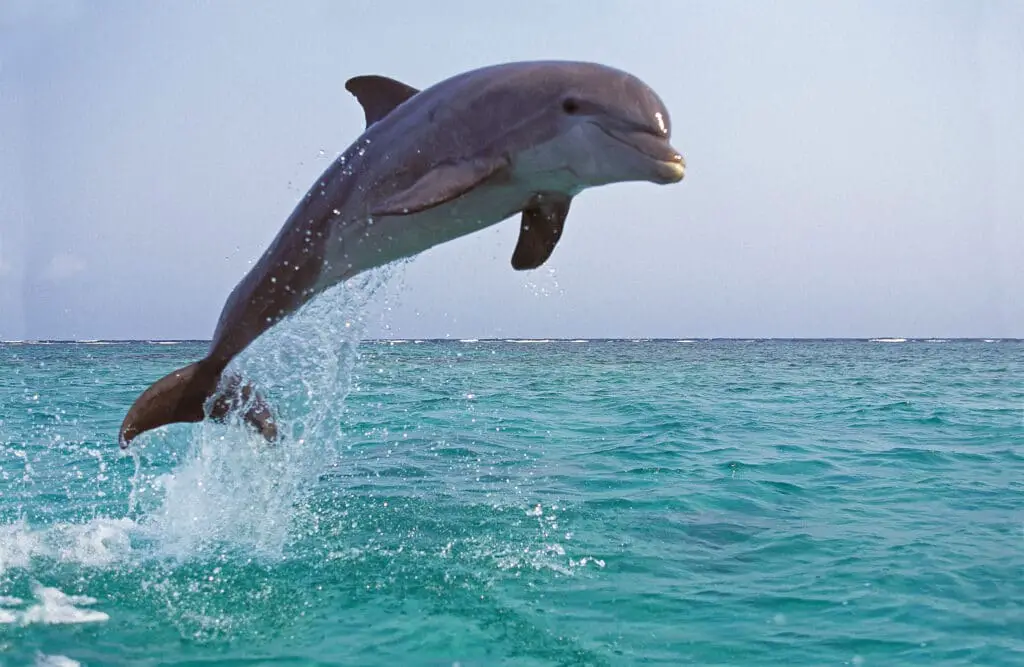
Conclusion
In the grand tapestry of the natural world, the moments when dolphins come out of the water are a testament to their adaptability and resilience. Whether it’s for socializing, hunting, or simply enjoying the sensation of the wind and sun on their sleek bodies, these marine marvels provide us with glimpses of their extraordinary existence. From the sparkling waters of the oceans to the confines of marine parks, each instance of a dolphin’s emergence reminds us of the deep connection we share with these remarkable creatures and underscores the importance of protecting their natural habitats to ensure that such moments continue to grace our world for generations to come.

